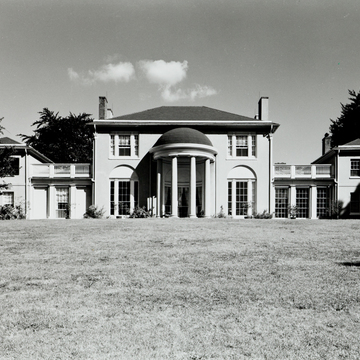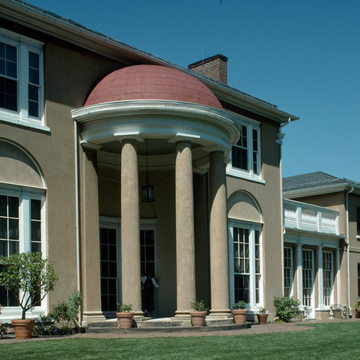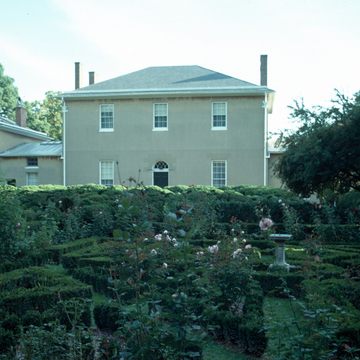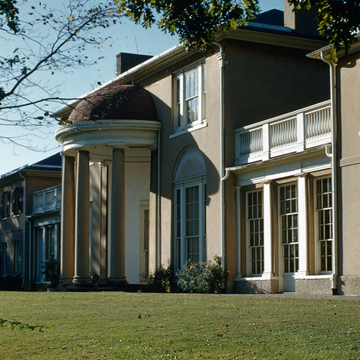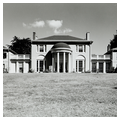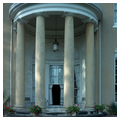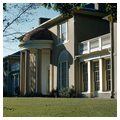In Tudor Place, Thornton realized a design as austerely geometric as could be found in the work of Benjamin Henry Latrobe, Robert Mills, or John Soane. Unlike much of Georgetown's Federal architecture, Tudor Place derives its appeal from three-dimensional composition and the play of light and shadows. Its drama is enhanced by the setting at the crest of a hill with an excellent view of the Potomac River.
When Thornton undertook the design for Thomas and Martha Custis Peter, he found two wings on the property, which were the only completed portions of what the previous owner envisioned as a large country house. Thornton provided the central structures and hyphens and joined the elements with buff




















